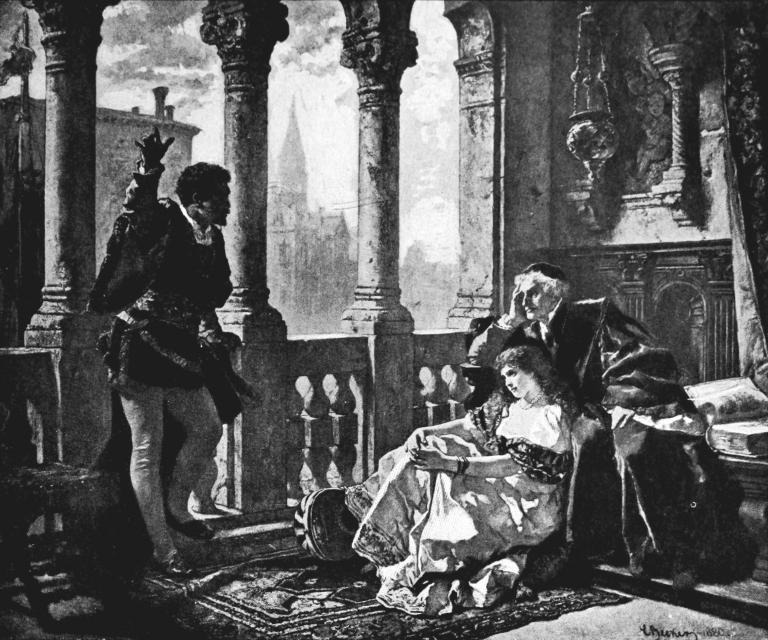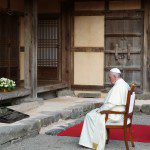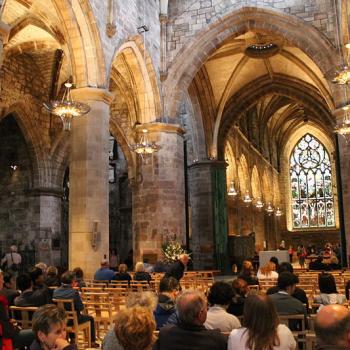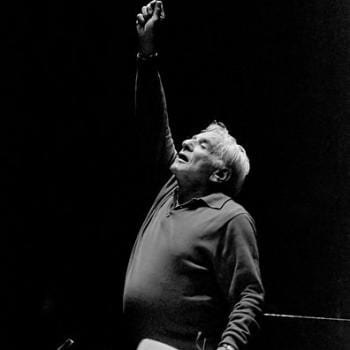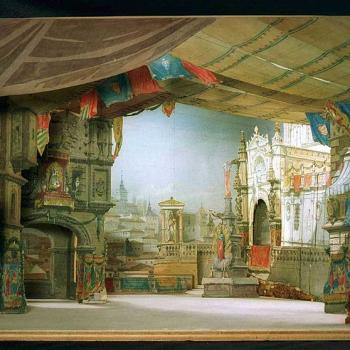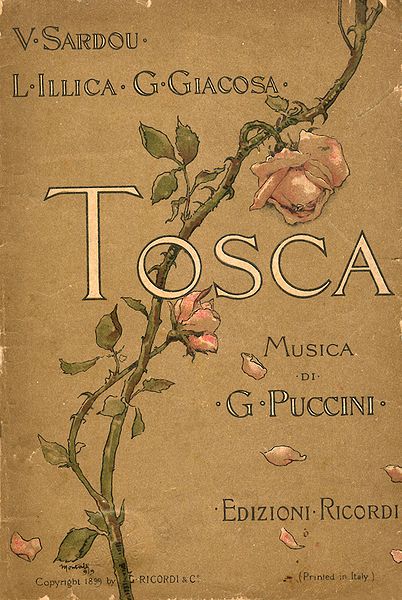by guest writer Gregory Moomjy
As children, we all have formative experiences. Perhaps few rival that of the great composer, Giuseppe Verdi. Serving as an altar boy in Busseto, Italy at the age of seven, Verdi was once so transfixed by the beauty of the church organ, that he missed his cue to provide holy water during mass. Unfortunately, his slight was met with a frustrated kick from the presiding priest, causing the maestro to fall down several steps. In his embarrassment, the young Verdi called for lightning to strike the celebrant. Strangely enough, that same priest was struck by lightning eight years later and died. Perhaps it was this encounter that began Verdi’s distrust of the priesthood. It is therefor ironic that two of his later masterworks, his Requiem (1874), and Otello (1887), deal with religion on a grand scale. Scholars argue that like many composers who wrote religious music, Verdi—although not religious himself—was deeply interested in the connection that others feel to their religion. This is one of the driving forces behind Otello, widely considered one of his best works.
When opera lovers mention Otello, they typically mean Verdi. But at the time of its composition, Verdi was writing in the shadow of Rossini’s version. Rossini’s Otello (1816) was one of the most frequently performed operas of the 19th century. Yet Verdi was able to streamline the story, amp up the orchestration, and lend the plot the trappings of a Christian allegory. Wherein, Iago, Othello’s wicked ensign, and Desdemona, Othello’s faithful wife, fight for our protagonist’s soul. This is in stark contrast to Rossini’s take, which is a straightforward love story, albeit one that was well adapted to opera.
From the opening bars of Verdi’s Otello, the audience finds themselves squarely in a drama of metaphysical proportions. The beginning of the piece corresponds to the start of Act II in Shakespeare’s play, which depicts Othello’s arrival in Cyprus. Despite being a Moor, and consequently the only person of color in the mighty Venetian army, he has climbed to the pinnacle of political success and has been awarded the governorship of Cyprus. Furthermore, he has just defeated a battalion of Turkish soldiers. But what should be a festive arrival is marred by a storm at sea, which nearly causes Othello’s ship to capsize. The onlookers back on shore are helpless to do anything but pray for their general’s safe arrival. In the orchestra, Verdi uses wind machines, trumpets, and woodwinds to create an almost apocalyptic storm
There are striking similarities between this opening storm and Verdi’s Requiem. That piece, written to mark the passing of Italian patriot and author, Alessandro Manzoni, was deemed too operatic for a funeral mass. The trumpets in Otello’s opening storm appear to reference the role of the trumpets in the Tuba Mirum of Verdi’s Requiem—symbolizing the trumpets at the last judgement. This is a key aspect of Otello’s Tinta—one of Verdi’s main contributions to the marriage between the music and text of an opera. Every one of his operas has a specific feel and sound-world that is unique to the setting of the story and the journey that the characters take. Otello’s tinta is appropriately bombastic as befits a story centered around a military hero. But, the grandiose nature of the music adds a metaphysical dimension to the story, giving the impression that the characters are subject to a force outside their control.
Othello is the only one of the opera’s three main characters that is multidimensional. This is an important facet of Verdi’s depiction of religious themes in the work. The other two, Iago and Desdemona, are far more elemental archetypes. A common critique of Verdi’s Desdemona is that she lacks the depth to exist in reality. She is too good, too forgiving, and unconditionally accepts the unfair treatment she receives at the hands of her husband. She is more a concept than a real woman.
Her counterpart, Iago, is pure evil. Unlike in the play, the opera does not bother with possible explanations for Iago’s hatred of Othello. He is evil, and the audience must simply accept that. His true nature is made abundantly clear in his second act aria, “Credo in un Dio Crudel”. The text of the aria is a demonic form of the Credo (profession of the faithful) in the Catholic mass. The text includes lines like “I believe in a cruel God… who has created me in his own image… I am vile because I am human.”
Like Iago’s Credo, Desdemona has an opportunity early on to stake her claim to Othello’s soul. The love duet, which closes Act I, occurs after Othello disbands a street brawl which Iago orchestrates. She establishes herself as the only person who brings Othello peace. We see this most clearly when they reminisce on how they fell in love. Othello assumes he won her over with his war stories, demonstrating that war is the only thing he knows. The music in the orchestra reflects this. When Desdemona counters that it was the tales of his childhood in slavery which demonstrated his more sensitive side, the music demurs—almost to pull him back out of himself.
At the end of their duet, overcome with feeling, Othello beckons Desdemona for “a kiss… a kiss… another kiss.” The music associated with that phrase reoccurs throughout the opera to symbolize the pull that she asserts over Othello as a positive force. The genius behind Iago’s scheme is his ability to remove Desdemona from the pedestal where Othello has placed her. Consequently, as Othello falls deeper under Iago’s influence, the angelic music associated with Desdemona is increasingly obscured by bombastic orchestration reflecting Othello’s insecurity.
The fulcrum of the opera is the duet between Iago and Othello, which closes Act II. In the play, this corresponds to what is known as “the marriage scene.” So named, because Othello and Iago exchange vows of fidelity to each other, in front of God, on bended knee. Verdi’s take on the marriage scene portrays Othello taking a sacrament, therefor coming closer to Iago’s “God of Vengeance.”
In Act III, we see just how irretrievable Othello is. His famous aria, “Dio Mi Potevi” poses the age-old question, ‘God, why me?’ He tells God frankly that he could bear any cross except an unfaithful wife. Most of the aria is lyrical, clarifying that he truly loves Desdemona. Unfortunately, he is incapable of shaking his uncertainties. Consequently, Othello commits to killing Desdemona. The aria finishes with Iago’s tumultuous tinta, blaring from the orchestra.
However, Desdemona gets the last word. After being publicly humiliated by Othello at the end of Act III, Act IV is clearly in Desdemona’s domain. The action takes place in her bedroom. The tinta shifts from bombast to soft meditation. Desdemona knows she is going to die, and yet calm prevails. Her final aria, before being smothered by Othello, is an “Ave Maria.” Here, her voice is simple, unadorned, and pure. The sparse accompaniment is in sharp contrast to most of the previous music. This is Desdemona’s answer to Iago’s Credo. Shortly thereafter, with Desdemona smothered, and Iago’s plot revealed, Othello kills himself. But with his dying breath, Othello asks Desdemona for a kiss. The music from the end of the love duet returns, and it is to that music that the curtain falls, making it clear that Othello has returned to his wife’s redeeming influence. Despite Iago’s corruption, Othello’s soul still belongs to Desdemona, granting Othello a modicum of grace.
Modern audiences may have problems with Shakespeare’s “Othello.” Many rightly wonder how Desdemona could lose her life for a made-up affair. For that matter, why can’t Desdemona and Othello communicate as husband and wife? But to ponder such questions is to get distracted by trivial narrative details. Verdi’s Otello has lasted so long because he eschews such minute questions. Instead, he sublimates the story, giving the tale the dimensions of a medieval morality play. Verdi’s characters are not real. Instead, they symbolize moral archetypes that are forces that exert pressure on human life. In this way, Verdi examines the intersection between religion and morality.
image credit: https://commons.wikimedia.org/wiki/File:Verdi_-_Otello_-_Otello_and_Desdemona_-_From_the_painting_by_Becker_-_The_Victrola_book_of_the_opera.jpg


